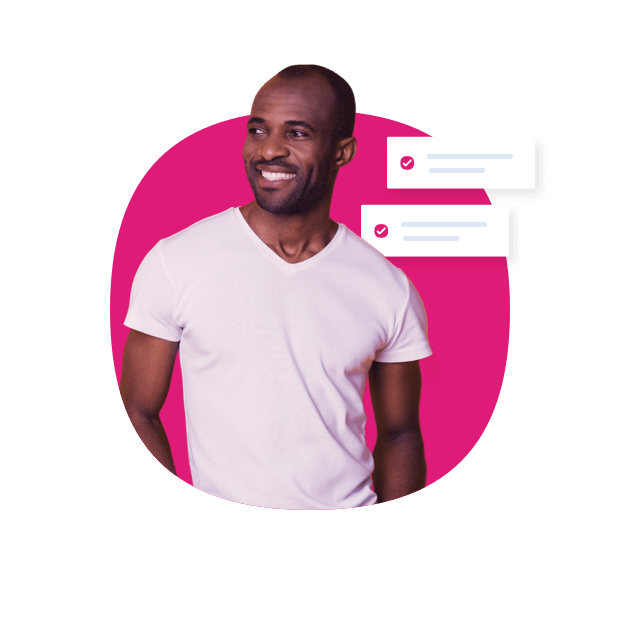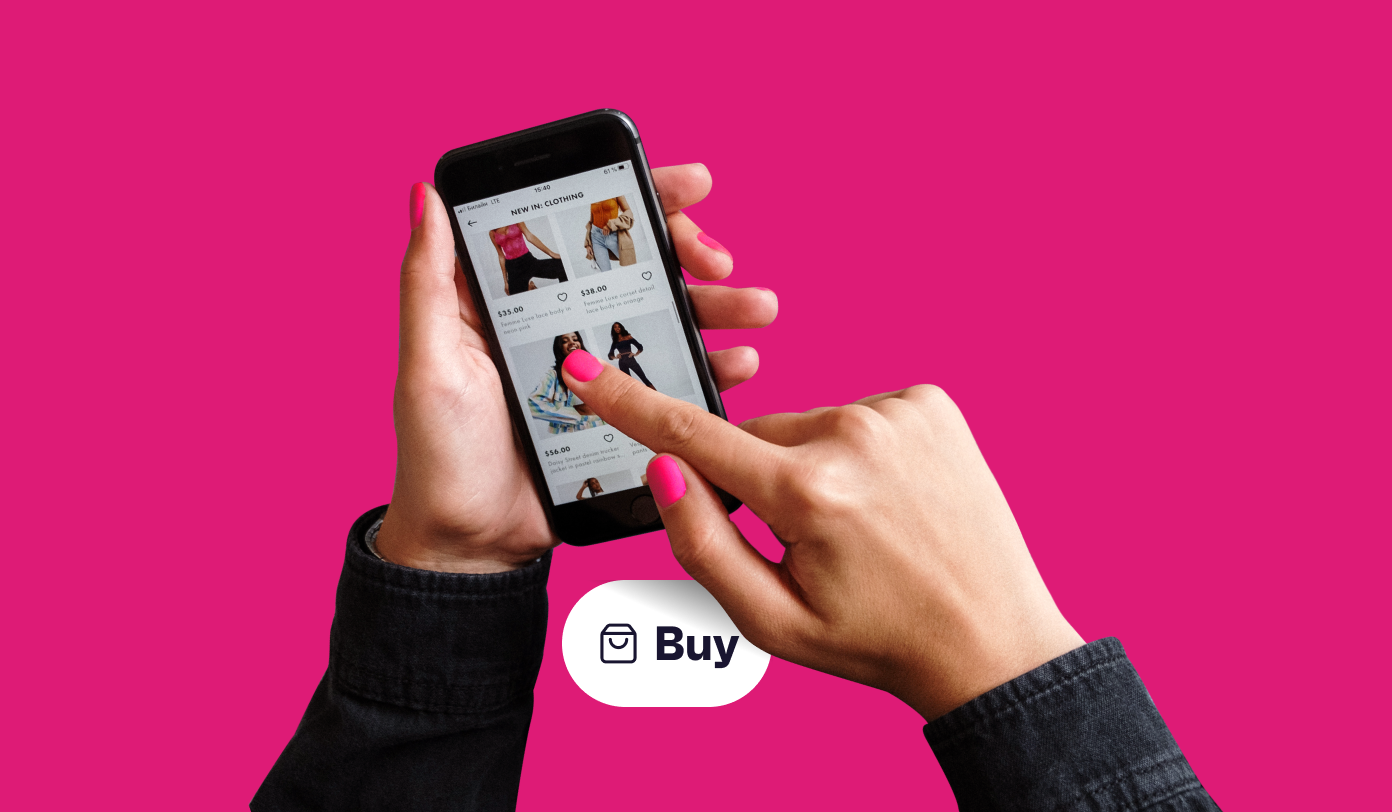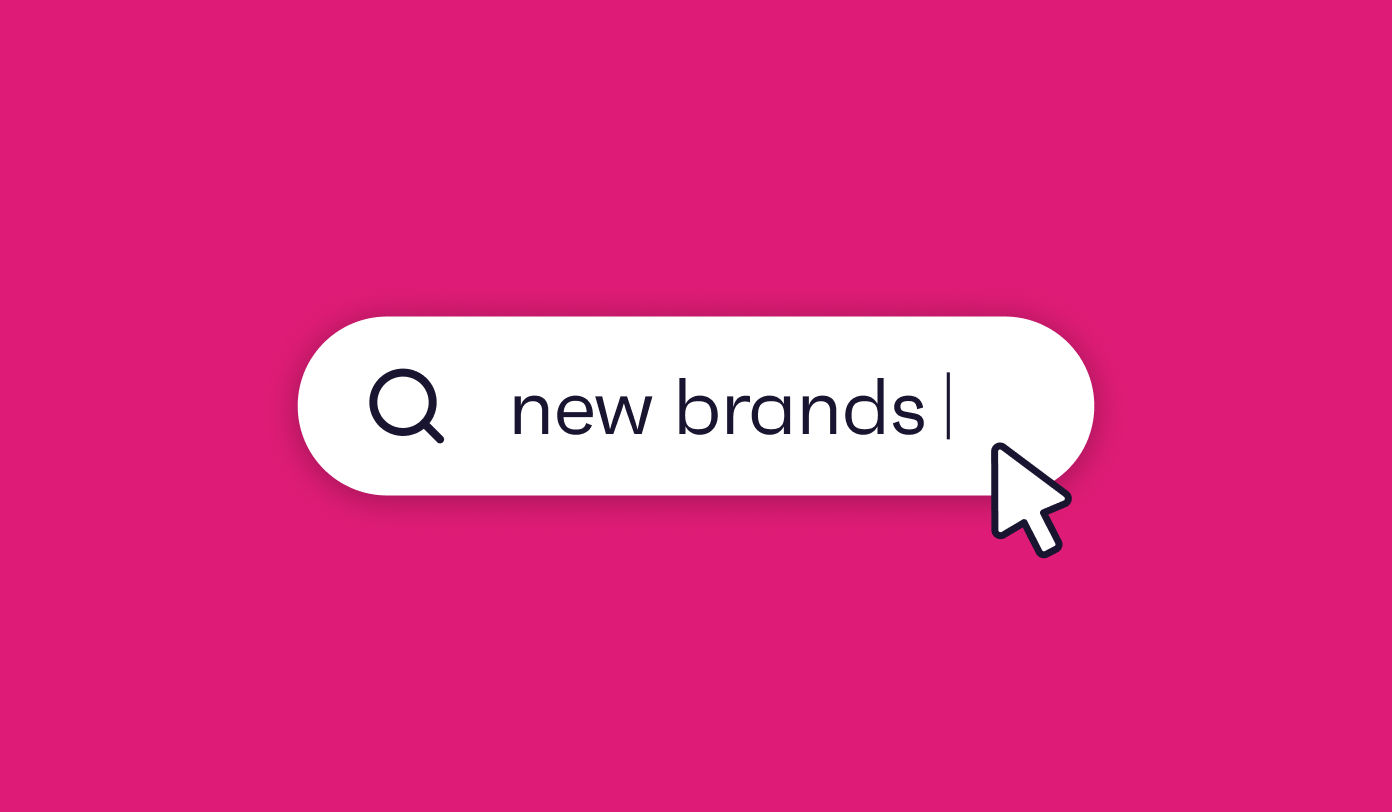Sure, you’ve probably heard of audience profiling. But how much do you really know about what it is, how it works, and how it can benefit your overall marketing strategy?
In this blog we’ll take a whistle-stop tour through the key points of this important topic, covering the following…
- What is audience profiling?
- Why is audience profiling important?
- What does the audience profiling process involve?
- How can audience profiling benefit your business?
- Audience profiling tips
- Audience profiling examples
What is audience profiling?
Audience profiling is the practice of analyzing and segmenting audiences based on shared behaviors to market to them more effectively.
Building comprehensive audience profiles gives you a deeper, more holistic understanding of who your customers are, from their buying habits and how they interact with your brand, down to which social networks they use most frequently.
These insights can be used to inform your marketing activity, helping you create more personalized content, and successful ad campaigns.
Why is audience profiling important?
At the heart of audience profiling is the common sense idea that if you know who your audience is (and what matters to them), you can create content that’s sure to land, cuts waste, and generates a better engagement rate.
That’s important because of an inconvenient marketing truth neatly articulated by Orvel Ray Wilson back in 1984: “Customers buy for their reasons, not yours.”
In other words, successful marketing is about what audience members want to hear, not just what businesses want to say.
It’s so easy to personalize the branding experience for every single customer, so there’s simply no excuse not to.
Today, consumers are far more complex, more demanding, and more in control than they’ve ever been and as a result, marketers can no longer rely on one data source for just one part of the process. Unveiling the ‘fundamental truths’ about your consumers, audience profiling holds the key to creating messages that resonate.
The audience profiling process
There are four key stages to building an audience profile:
1. Segmentation: Collecting and segmenting the data
2. Messaging: Using the data to inform your messaging
3. Engagement: Devising an effective engagement strategy
4. Measurement: Evaluating the impact of your audience profiling
Step 1: Segmentation
The first stage of audience profiling is segmentation. Previously, brands split consumers into groups based on demographics like age, gender, and location to create targeted campaigns. However, this method proved to be less successful when it came to delivering results.
With the help of global data platforms like GWI that track consumer behavior and perceptions on a massive scale, it’s now possible to create custom audiences within seconds, and build accurate audience profiles to zero in on exactly the right people.
With our ad platforms integration, you can even push these audiences directly into your chosen ad platform to guarantee you’re reaching the right people.
Today, audience segmentation tools not only take into account demographics, but lifestyles, attitudes, self-perceptions and interests.
Want to take your audience segmentation one step further? Building buyer personas using the data and key findings from your audience segments can help you build a clear picture of exactly who your customer is, and inform more targeted content that really resonates. For the full scoop on building target personas, head over to our step-by-step guide.
Remember, consumers’ behavior and interests change over time, so make sure you’re updating your audience research and analysis on a regular basis. This will ensure you’re still targeting the right people in the right way. After all, the best marketing campaigns weren’t built around yesterday’s trends.
Step 2: Messaging
The next stage in the audience profiling process: using your segmentation to hone your messaging. Using audience segmentation tools and techniques to understand the perceptions that are blocking – or indeed driving – repeat purchasing means you’ll know what to say to achieve your goals.
Analyze how your target consumers are responding to your current messaging, whether the data backs up your assumptions about your audience, and how you can use it to craft a message that really resonates.
When crafting your message, refer back to your customer segments so you’re clear on exactly who you’re targeting. Think about the key characteristics and behaviors of your audience, as well as the problems they’re facing that your product can help to solve. Be clear on how your brand solves the problem, referencing results or positive brand stories if possible.
Step 3: Engagement
With target audience analysis shaping your content in a way that all but guarantees impact, the next step is knowing where to place it for maximum engagement.
Engaging today’s consumers means knowing where they are and what they do.
Collate insights from audience profiling data that look at consumer behavior across platforms, devices, channels and social media platforms to improve where, when, and how you reach potential customers.
Uncovering insights that are specific to your audience and target market will allow you to elevate your voice in a way that maximizes results, taking your marketing strategy to the next level.
Ready to jump in? Find out how to apply this approach to boost audience engagement across all your marketing channels.
Step 4: Measurement
When tracking the impact of your audience profiling, it’s important to measure everything using a single source of consumer data. To ensure the data you’re using is both accurate and informative, use robust tracking to validate your audience targeting and measure campaign effectiveness.
Be sure to use analytics that track people, not devices, as this offers a more holistic portrayal of audience behaviors across time, location, devices, and platforms. It’s the final puzzle piece you need to succeed with your target audience profile, based on reliable data that reflects real people.
Review and quantify the impact of your efforts continuously so you can tweak, optimize, and repurpose your marketing to better reflect your customers and attract new audiences.
For more on how to measure the impact of audience profiling, head over to our guide on what to look out for.
Benefits of audience profiling
Audience profiling provides valuable insights for every step of the customer journey, and across all four core marketing disciplines.
1. It gives you a 360 degree view of who you’re targeting
Profiling audience data allows you to put consumer insights at the heart of everything you do and answer important questions about your audience, such as:
- Is this the right audience?
- What defines these target segments?
- What are their perceptions of our brand?
- What social media do they use?
- What does their average day look like?
- How do they make purchasing decisions?
- What does their journey with us look like?
2. It enables you to identify and address perceptions your audience has about your brand
Audience profiling helps you unlock new insights about your target audience to map into new business opportunities that drive your marketing strategy forward.
Creating messages that resonate starts with understanding the perceptions you want to shift.
A great example of a brand putting this into action is BuzzFeed. They uncovered the insight that brands perceived them as a brand for millennials, when in fact, their audience was much more diverse.
This insight underpinned their strategy to attract a broader range of advertising partners. BuzzFeed embarked on a full audience analysis with cross-market data to discover new insights that could help shift perceptions.
They then created targeted newsletters outlining some of their most impactful findings on their non-millennial audience segments. This approach helped them win more business, and solidify relationships with existing clients in up-and-coming markets.
3. It makes it easier for you to reach your target customer
Understanding your consumers’ interests, attitudes, and where to find them online not only allows you to craft a message that resonates, but also ensures you’re investing in the right channels to reach them.
Audience profiling is essential to understand where to spend your time and money for the greatest return on investment.
4. It allows you to accurately measure the impact of your marketing efforts
With budgets under more scrutiny than ever, ROI tracking has become increasingly important in recent months. However, it still isn’t easy for marketers to get the answers they need.
Audience profiling tracking tools help to demystify campaign performance, allowing marketers to measure their activity with reliable data that reflects real people and different audiences, and ending the over-reliance on passive data and ‘probabilistic’ solutions.
7 awesome tips for audience profiling
Having made the case for audience profiling, let’s look at some proven ways to improve its delivery.
Tip 1: Use a single source of data. With the abundance of data now available, you can definitely afford to be picky. Choose the source of consumer research that promises the most relevant data, and stick with it to make damn sure you’re not losing detail or creating multiple versions of the truth.
Tip 2: Know what you’re looking for. The sheer volume of data can be overwhelming and unhelpful if you don’t have a plan. Keeping an aim in mind means you can create actionable and well-executed insights, and avoid getting lost in the research.
Tip 3: Split your segments to your objectives. Not everything will be relevant to the objectives you’re working towards. In the same way you tailor your marketing, tailor your segments to cut down any unnecessary noise.
Tip 4: Track the right footprints. When you know who your target consumers are, you can identify the touchpoints they’re engaging with – and why they’re attractive – using detailed and reliable consumer journey maps.
Tip 5: Find the hot buttons. Think about the most compelling way to position your brand as the top choice for target consumers, and how you can work this into your marketing messaging.
Tip 6. Drive personal engagement. Personalization is at the very heart of engagement. With this in mind, you need to appeal to target audience interests and invest in the right channels.
Tip 7: Run ad effectiveness studies. Ad effectiveness studies can help you evaluate the true impact of your campaign on your exact target audience, informing important adjustments for future campaigns.
Audience profiling examples
So how does audience profiling work in practice? Here’s an example. Customer engagement agency, TMW Unlimited, whose clients include HSBC, Sony, and Unilever, uses audience profiling to help their clients understand consumer behaviors across platforms and channels.
TMW uses in-depth audience profiling data to make informed recommendations to their clients on which platforms to use (based on which are plateauing or in decline in use for their audience) and which strategies to employ to reach their target customers most effectively.
This sort of audience profiling adds real credibility to TMW’s pitches to new and existing clients, and enhances their channel planning. For TMW, audience profiling really pays dividends in three key areas:
- Social media – including looking at account ownership, actions and influences in terms of brand and purchasing decisions
- Devices – especially examining device usage among various audiences and deciding where to focus their efforts
- Media consumption – like measuring time spent by particular audiences on various channels
In short, building audience profiles enables TMW to back up their ideas and make sure everything they do is steeped in real data and real facts – giving their work real impact.
Check out the full TMW Unlimited case study for more info.
Ready to supercharge your audience research? Get started with GWI.
Fancy a look around?
Book your demo





.webp?width=495&height=317&name=pink_thumb_graphs%20(1).webp)
.webp?width=495&height=317&name=pink_thumb_letter%20(2).webp)
